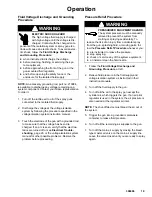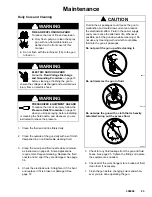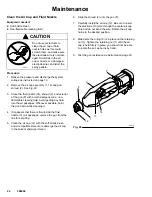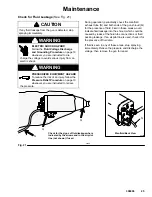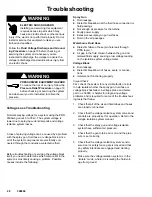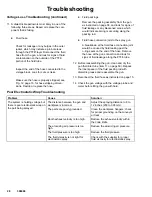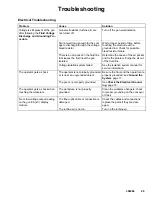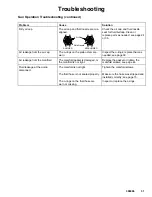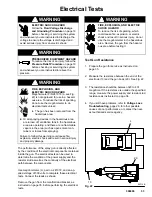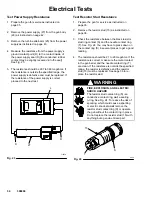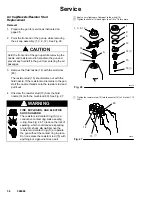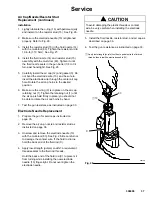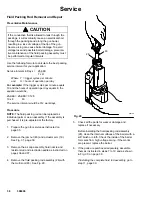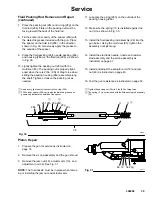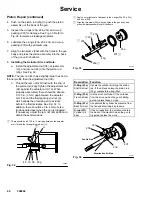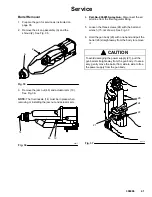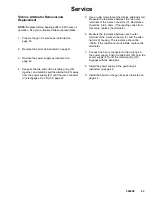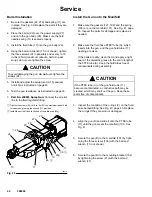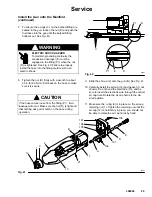
30 308496
Troubleshooting
Gun Operation Troubleshooting
Problem
Cause
Solution
Fluid leakage from the fluid pack-
ing area
The fluid rod packings or fluid rod are
worn.
Replace the packings or rod; see
page 38.
Fluid leakage from the front of the
The fluid rod is worn or damaged.
Replace the fluid rod; see page 38.
gun
The fluid seat is worn.
Replace the fluid nozzle and/or elec-
trode needle; see pages 36 to 37.
The resistor stud is loose.
Tighten the resistor stud; see page
36.
The fluid nozzle is loose.
Tighten the fluid nozzle; see page 36.
The resistor stud o-ring is damaged.
Replace the o-ring; see page 36.
“Orange Peel” finish
The air pressure is insufficient for
good atomization.
Increase the air cap air pressure by
increasing the gun air inlet pressure;
use the least air pressure needed for
good results.
The fluid is poorly mixed or filtered.
Remix or refilter the fluid.
An improper thinner is being used.
Use the proper thinner.
Excessive spray fog
The air pressure is too high.
Reduce the air cap air pressure by
decreasing the gun air inlet pressure;
use the least air pressure needed for
good results.
The fluid is thinned too much.
Properly thin the fluid.
No fluid sprays from the gun
The fluid supply is low.
Check the fluid supply; add fluid if
necessary.
The fluid nozzle is dirty or clogged.
Clean the fluid nozzle; see page 24.
The fluid nozzle is damaged.
Replace the fluid nozzle; see page
36.
The piston is not actuating.
Check the cylinder air; check the
piston u-cup; see page 39.
The actuator arm is out of position.
Check the actuator arm and nuts; see
page 39.
The equipment is covered with
fluid
The exhaust air flow is insufficient or
not directed properly.
Check for the proper CFM; check the
baffles and direction of the air flow.
The distance between the gun and
workpiece is incorrect.
Adjust the spraying distance to 8 to
12 inches (203 to 305 mm).
Dirty air cap
The electrode is bent.
Straighten the electrode.
The nozzle orifice is damaged.
Replace the fluid nozzle; see page
36.
The fluid is coming on before the air.
Check the position of the actuator
arm.
Summary of Contents for PRO 5500wb
Page 49: ...308496 49 Notes ...
Page 59: ...308496 59 Notes ...




